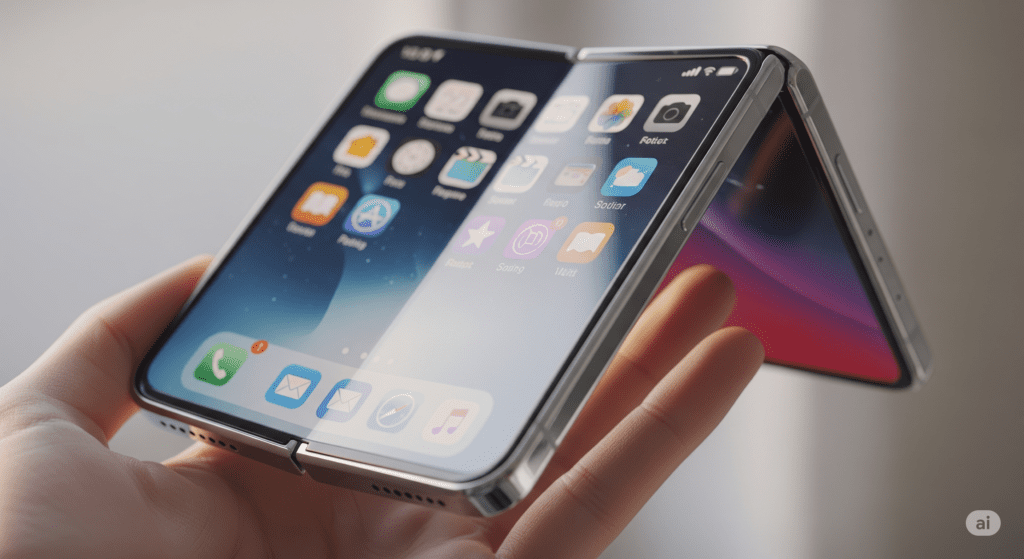The wait for an Apple foldable device might finally be nearing its end! Rumors and analyst predictions are heavily pointing towards Apple entering the foldable smartphone market in 2026. While nothing is officially confirmed by Apple, the tech world is buzzing with anticipation for what could be a revolutionary device.
Expected Release Window: Gearing Up for a 2026 Launch
Highly credible sources, including prominent Apple analyst Ming-Chi Kuo, suggest that the first foldable iPhone could launch in 2026. Production is reportedly set to begin in late Q3 or early Q4 of 2025, with Apple supplier Foxconn kicking off assembly. This aligns with a potential debut alongside the iPhone 18 series in September 2026. However, some reports also mention the possibility of the launch extending into early 2027, as Apple typically prioritizes perfection over being first to market.
Price: A Premium Entry into the Foldable Market
Prepare for a significant investment! The foldable iPhone is widely expected to carry a premium price tag, potentially ranging from $2,000 to $2,500 (approximately ₹1.73 lakh to ₹2.16 lakh in India). This would position it as a luxury item, significantly more expensive than current flagship iPhones and even some competing foldable models. Apple’s strategy appears to be a gradual market adoption, with initial shipments projected between 3 to 5 million units in 2026, and cumulative demand spread over a 2-3 year product lifecycle.
Key Specs and Design: A “Book-Style” Marvel

From the latest leaks and industry insights, here’s what we can expect from Apple’s first foldable iPhone:
- Design: The device is heavily rumored to feature a “book-style” design, similar to Samsung’s Galaxy Z Fold series, rather than a clamshell form factor. This design is expected to provide an immersive experience for multitasking and content consumption.
- Displays:
- Internal Display: A stunning 7.8-inch internal display is anticipated, with a strong focus on being “crease-free”. This would be a significant engineering feat, addressing a common concern with current foldable phones. The resolution is tipped to be 2,713 x 1,920 pixels at 428ppi.
- External Display: A 5.5-inch outer display is expected for standard smartphone use when folded. It may offer a resolution of 2,088 x 1,422 pixels at 460ppi.
- Display Supplier: Samsung Display (SDC) is reportedly set to be the primary supplier for these foldable panels, with plans for an annual production capacity of 7-8 million units for Apple.
- Thinness: Apple is reportedly aiming for an incredibly slim profile. The device could measure under 5mm when unfolded (around 4.5mm) and between 9-9.5mm when folded, making it one of the thinnest foldables yet. This ambition might be influenced by the rumored ultra-thin iPhone 17 Air.
- Materials: Expect premium materials like a titanium alloy chassis for enhanced durability and a luxurious feel.
- Hinge Technology: A significant engineering focus is on the hinge mechanism to ensure a minimal or invisible crease. Rumors suggest the use of liquid metal for the hinge, a material known for its strength and flexibility, potentially making it twice as strong as titanium.
- Cameras: The foldable iPhone is likely to feature a dual-camera system at the rear (similar to the standard iPhone 16 design, with a Main and Ultra-Wide lens). There’s speculation about a hidden under-display camera for the larger internal screen, while the cover display may feature a standard punch-hole front camera.
- Authentication: Due to internal space considerations for achieving the ultra-thin design, Touch ID may be incorporated as a side-mounted sensor instead of Face ID.
- Battery: While exact specifications are not yet known, Apple is reportedly focusing on a high-density battery, possibly a 5,000mAh 3D stacked battery, to optimize power efficiency for the larger, flexible display.
- Internal Components: Apple is also rumored to be upgrading its display driver ICs to a more efficient 16nm process for better battery life.
The Apple Advantage: Why Now?
Apple’s entry into the foldable market comes years after competitors like Samsung pioneered the segment. This “late-mover advantage” aligns with Apple’s traditional approach of prioritizing refinement and a polished user experience over being first to market. By observing and learning from the challenges faced by early foldable devices (like display creases and durability concerns), Apple aims to deliver a product that sets a new standard for quality and functionality.
The company has been exploring foldable display technology through patent filings for nearly a decade, and its focus on a “crease-free” display is a testament to its commitment to design excellence. Apple’s dominance in the premium smartphone segment could significantly boost the overall foldable market, which has seen slower adoption compared to traditional smartphones.
What This Means for the Future
An iPhone foldable phone has the potential to redefine the premium smartphone landscape. Its anticipated focus on a seamless, crease-free display, combined with Apple’s renowned ecosystem integration and user experience, could make it a highly desirable device. While the high price point might limit initial accessibility, it’s clear that Apple is aiming to create a truly innovative and premium product that could attract a new wave of users and push the boundaries of mobile technology.
Stay tuned for more official announcements as 2026 approaches! The foldable iPhone could be one of Apple’s most exciting releases in years, and the tech world is eagerly awaiting its debut.
